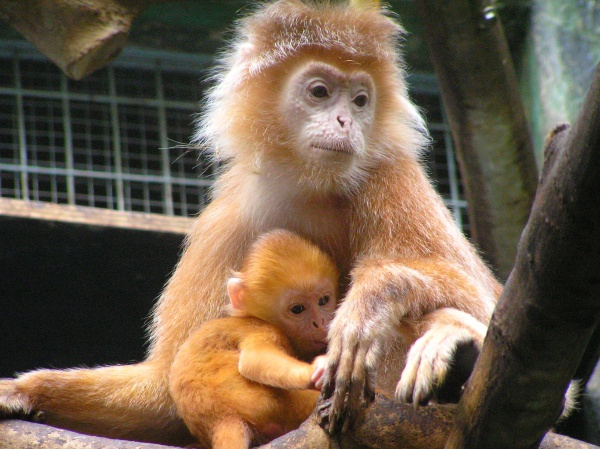Facts About Javan lutung
The East Javan langur, also known as the ebony lutung, Javan langur, or Javan lutung, is a captivating Old World monkey that belongs to the Colobinae subfamily. Easily recognizable by its sleek black coat with subtle brownish tinges on its legs, sides, and "sideburns" this unique species is native to Java and a few neighboring Indonesian islands. Its scientific name, Trachypithecus auratus, hints at a rarer golden-colored variant, which should not be confused with the distinct golden langur species.
These langurs are remarkable for their long tails, which can extend up to 98 cm, compared to their body length of about 55 cm. Both subspecies appear quite similar, with males and females typically flaunting glossy black fur. However, females are distinguished by a yellowish-white patch around their pubic area. Interestingly, the juveniles are born orange, and some adults of the nominate subspecies may retain a hint of this juvenile coloration as they mature.
East Javan langurs thrive in the interior and peripheries of rainforests, leading an active, arboreal lifestyle during the day. Their diet primarily consists of leaves, fruits, flowers, and insect larvae. They possess specialized stomachs and enlarged salivary glands that aid in the efficient digestion of their fibrous meals.
Social by nature, these langurs usually live in groups of about seven individuals, including one or two adult males. Female langurs are particularly protective, especially towards females from other groups. The bright orange color of juveniles is believed to signal for protection. Mating occurs throughout the year, and females typically give birth to one infant at a time.
Historically, there were two recognized subspecies of Trachypithecus auratus: the Eastern Javan langur and the Western Javan langur. However, in 2008, researchers Roos et al. reclassified Trachypithecus auratus mauritius as a separate species, now known as Trachypithecus mauritius.

 Timor Leste
Timor Leste